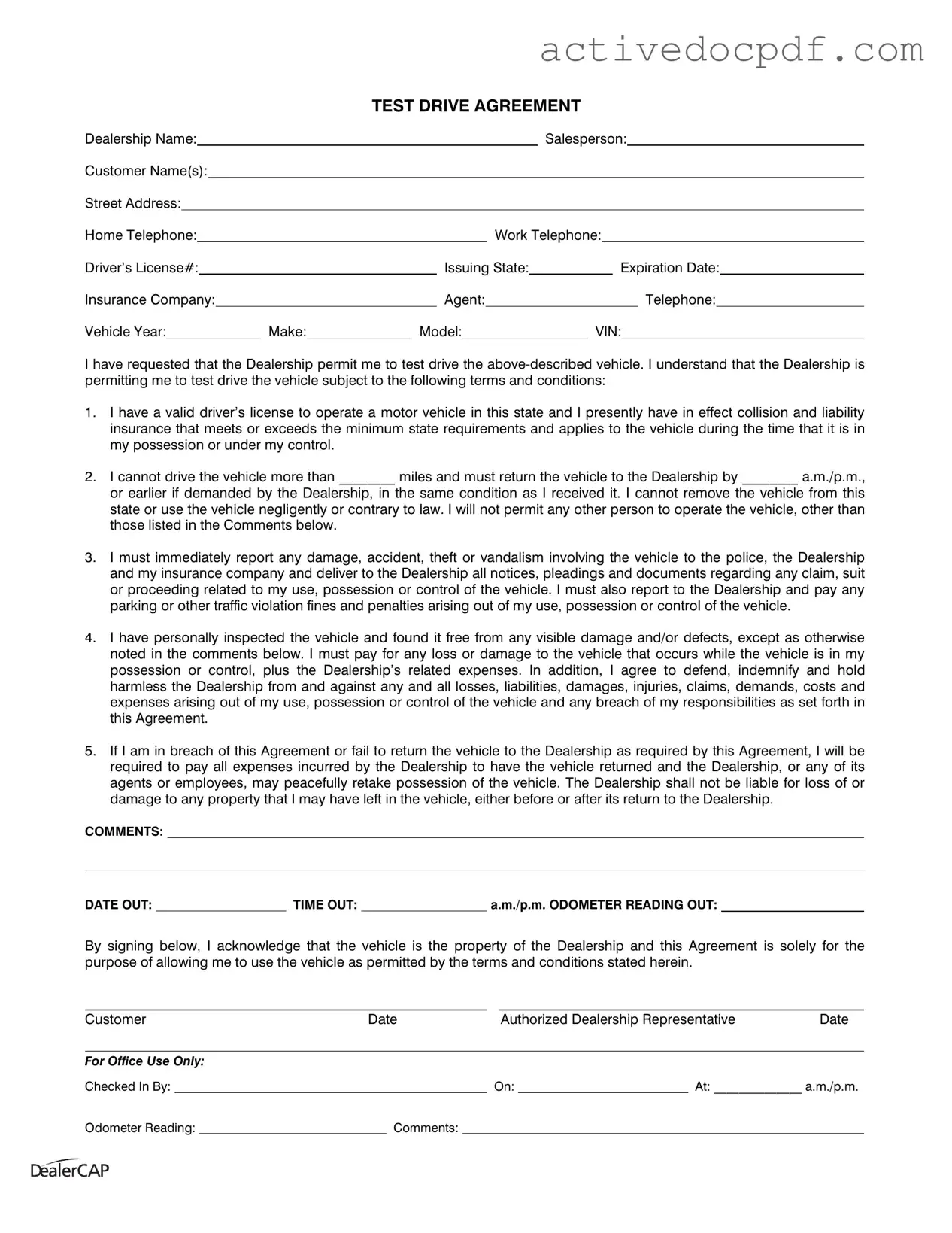The Test Drive form is a document that allows a customer to take a vehicle from a dealership for a limited time to evaluate its performance. This form outlines the terms and conditions under which the test drive is permitted, ensuring both the dealership and the customer understand their responsibilities.
You will need to fill in various details, including:
-
Your name and contact information.
-
Your driver's license number and issuing state.
-
Your insurance details, including the name of the insurance company and agent.
-
Information about the vehicle you wish to test drive, such as the make, model, and VIN.
What are the requirements for taking a test drive?
To take a test drive, you must have a valid driver's license and active insurance that meets state requirements. You also need to agree to the terms outlined in the Test Drive form, including limitations on mileage and return conditions.
Can I let someone else drive the vehicle during the test drive?
No, only individuals listed in the comments section of the form are permitted to operate the vehicle. This ensures that the dealership can maintain accountability and manage risk effectively.
What happens if I damage the vehicle during the test drive?
If any damage occurs while the vehicle is in your possession, you are responsible for paying for the repairs and any related expenses incurred by the dealership. It's important to inspect the vehicle beforehand and note any existing damage in the comments section.
What should I do if an accident occurs during the test drive?
In the event of an accident, you must immediately report it to the police, the dealership, and your insurance company. Additionally, you are required to provide all necessary documentation related to the incident to the dealership.
What are the consequences of not returning the vehicle on time?
If you fail to return the vehicle by the agreed-upon time, you may incur additional charges for the dealership's expenses related to retrieving the vehicle. The dealership retains the right to reclaim possession of the vehicle peacefully.
Is my personal property safe while using the test drive vehicle?
The dealership is not liable for any loss or damage to personal property left in the vehicle during the test drive. It's advisable to remove all personal belongings before returning the vehicle.
How do I finalize the test drive agreement?
To finalize the agreement, you must sign the Test Drive form, acknowledging that you understand and agree to the terms and conditions outlined. An authorized dealership representative will also sign the form to confirm the arrangement.
